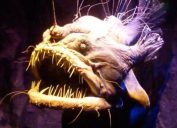30 Crazy Critters You Won't Believe Exist
And they said nightmares couldn't come to life...

Every year, scientists discover anywhere between 15,000 and 18,000 new animal species. Simple algebra tells us, then, that there are countless thousands, perhaps millions, left to discover. And, of the approximately 8.7 million species already discovered, there are those that one might call "critters"—you know, the small, often creepy, animals that we'd rather not acknowledge at all.
So, for your viewing pleasure, we've gathered the most terrifying, strange, and out-of-this-world critters on the planet. From nocturnal sloths with panic-inducing talons to a little terrifying fella called the promachoteuthis sulcus, these are the animals that will make you check under the bed a second (and third, and fourth) time tonight. (Oh, and you'll also find a few cuties throughout—to help abate the nightmares.) And for more on the most fear-inducing species in the world, check out these 30 Most Deadly Animals on Earth.
1
Chevrotain

Also known as a "mouse deer," the Chevrotain originates in Southeast Asia and are the smallest hoofed animals in the world, weighing, at their lightest, only around 2 pounds. The Telugu name for this animal is jarinipandi, which translates to "a deer and a pig." And this whole time you thought the Island of Doctor Moreau was complete fiction. And for more astonishingly tiny creatures, meet these 23 Smallest Animals on the Planet.
2
Aye-Aye
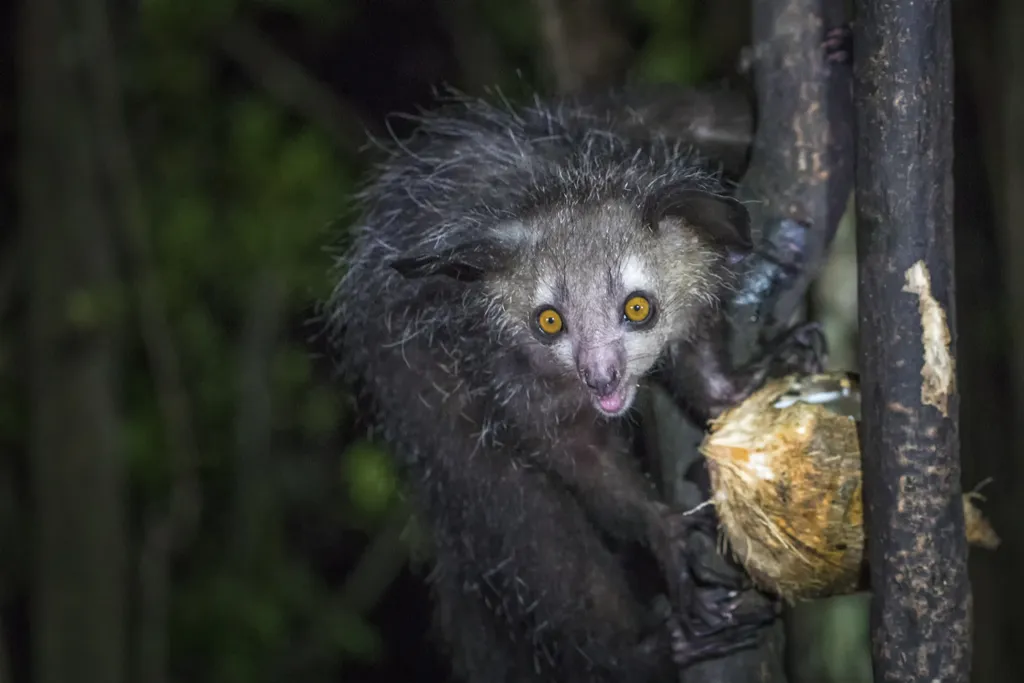
This Madagascar-native lemur is the world's largest nocturnal animal—and most missable, visible in the trees by a simple flash of yellow eyes. Though they were believed to be extinct in the early part of the 20th-century, the species was rediscovered in 1957. However, since folklore has the locals believing that these animals are the harbingers of evil and death (even going so far as to believe that if the animals point one of their long fingers in their direction, that they are then marked for death), they are endangered again due to the number of killings by locals believing in these legends. And for more creatures on the brink, meet these 20 Animals That Are Tragically Near Extinction.
3
English Angora Rabbit
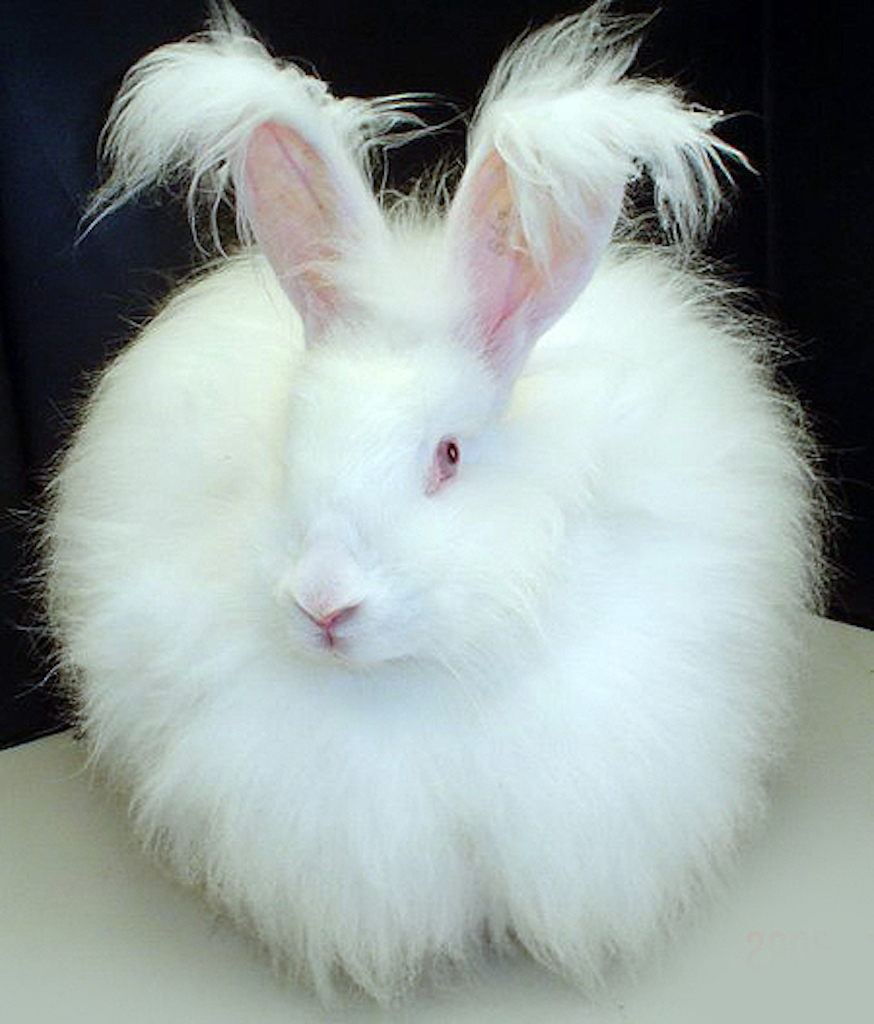
The Angora Rabbit, one of the oldest types of domesticated rabbits, is also known for having one of the most high maintenance grooming routines, requiring trims at least twice a week. For those who choose not to keep up with this challenging routine, the Angora Rabbit's fur can grow to extreme lengths (similar to the one pictured above). Since the 16th century, these rabbits have been valued by royals and pet breeders alike as they possess qualities that make them more docile and easy to train.
4
Elephant Shrew
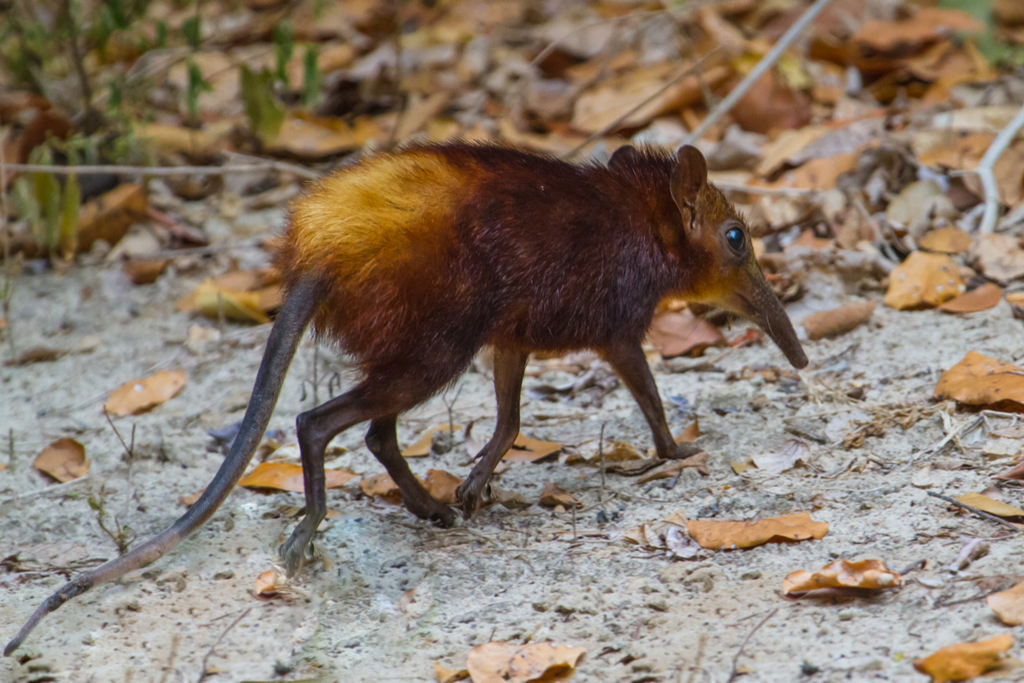
This is one elephant that, were it in a room with you, you might actually miss it. These small insectivorous mammals, native to Africa, get their name from the resemblance between their long noses and that of the trunk of an elephant. However, while they do possess many qualities typical of shrews, a 1997 phylogenetic genetic analysis (a study of the evolutionary history of the animal) of the Elephant Shrew found that it was actually more similar to an elephant. Put another way, elephant shrews are the smallest species of elephant in the animal kingdom.
5
Josephoartigasia monesi

This extinct species, who lived approximately two to four million years ago, is the largest rodent to have ever existed in the animal kingdom, clocking in at around a ton. Due to the shape of its skull and presence of large incisors (measuring up to 12 inches in length), the Josephoartigasia monesi is often compared to a hamster. And for creatures that actually came back from the brink, meet the 15 Animal Species Miraculously Saved From Extinction.
6
Red and White Flying Squirrel (Petaurista alborufus)
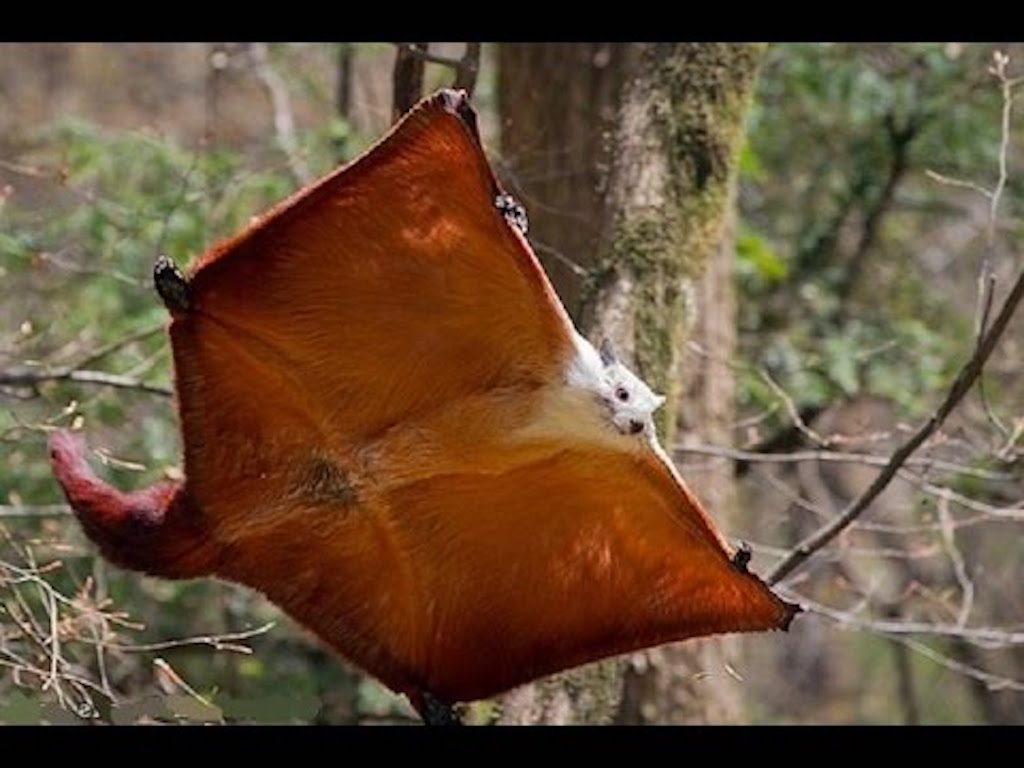
Also known as the Chinese Giant Flying Squirrel, this rodent is the largest species of giant squirrel in the world, measuring out to be a little more than three feet from the tip of its head to the end of its tail. Endemic to China and Taiwan, these flying squirrels can cover distances of up to 65 feet during flight, are easily identifiable in this area for their bright blue eyes and unique coloring of their coat.
7
Bosavi Woolly Rat
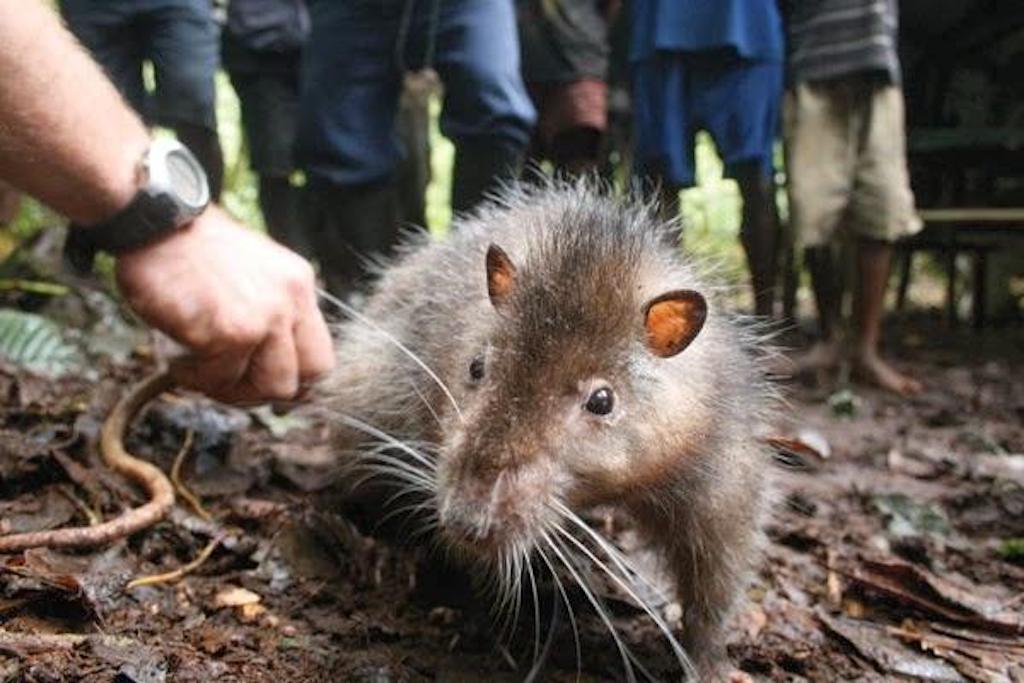
Thought to be the world's largest species of rat, the Bosavi Woolly Rat was first discovered in 2009, during the filming of a BBC documentary, Lost Land of the Volcano, which detailed the exploration of the extinct volcano crater of Mount Bosavi. These rats, discovered deep in the volcano, measured out to 32 inches long and weighed around 3 pounds. What makes these giant rats so unique is their incredibly docile nature—they show no fear of humans, for instance—contrary to normal rat species.
8
Star-Nosed Mole
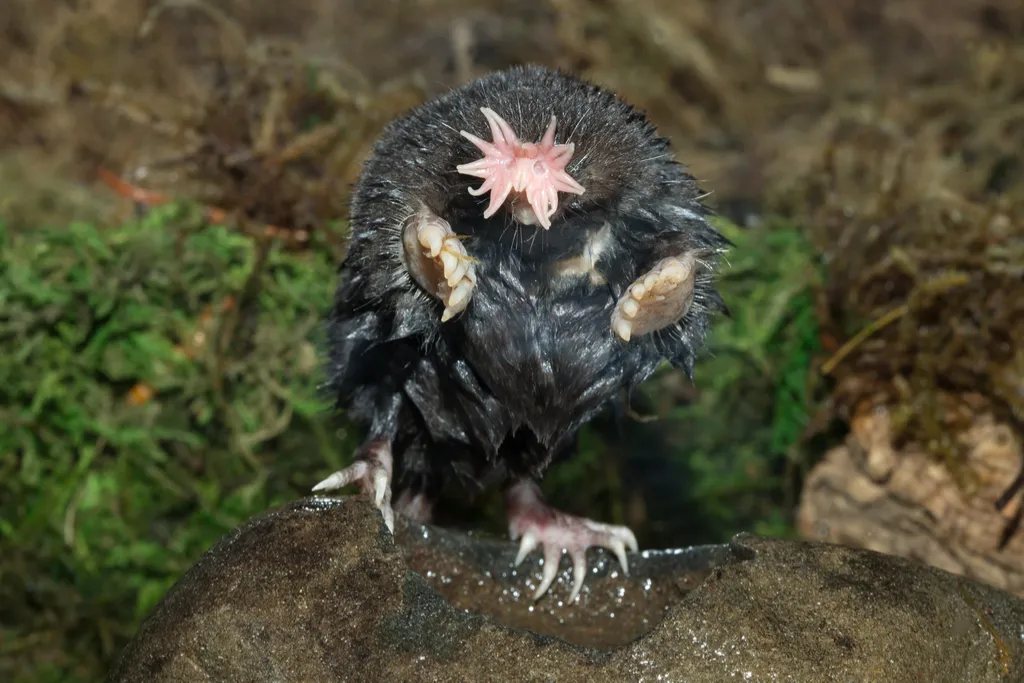
This incredibly unique mole, endemic to parts of Eastern Canada and the United States, is easily identifiable by its star-shaped nose, which is covered in receptors, known as Elmer's organs. Because the Star-Nosed Mole is blind, it uses its receptors to "see" the world—even the ability to see and smell underwater. In fact, many engineers have taken notice of the special qualities of the Star-Nosed Mole, and have begun to analyze how the mole's transfer from sight to smell works, and how we can learn from this process to help blind humans interact with the world.
9
Goliath birdeater
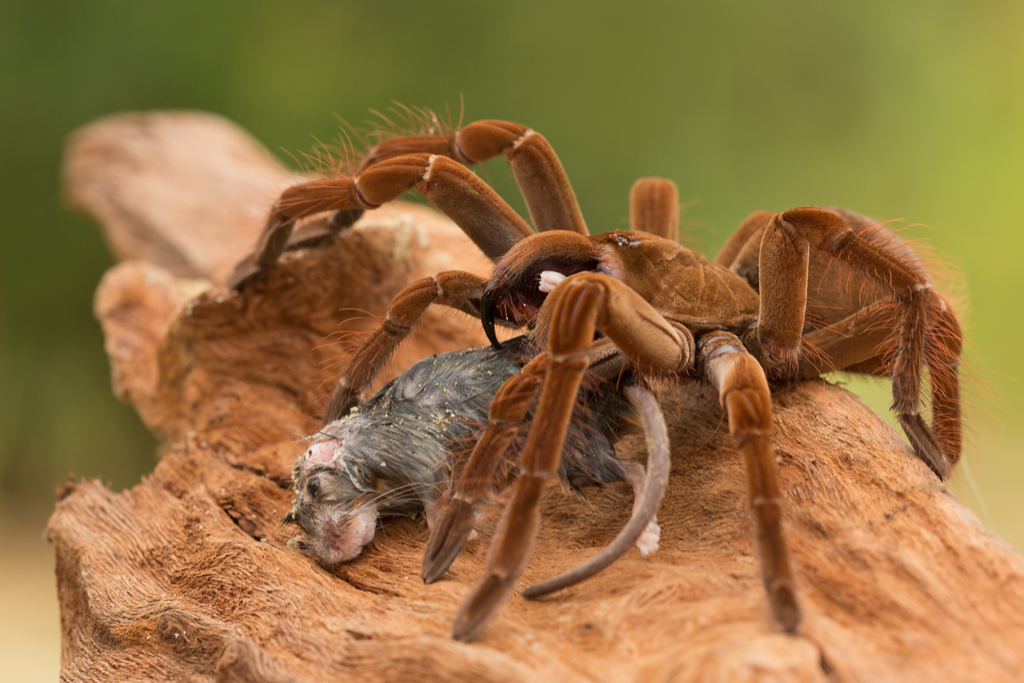
Found in northern South America, this spider is the second-biggest spider in the world, with the Giant Huntsman Spider coming out to be just a few centimeters longer in leg-span (but more on that later). While the tarantula was first named for its supposed tendency to prey on hummingbirds, centuries later, it has become apparent that this is a rare occurrence for the Goliath birdeater, who normally consumes frogs, lizards, other insects, and occasionally snakes.
When they sense danger or are facing an imminent threat, these spiders can actually use their fangs (yes, fangs) to kill predators. While the hairs on their body, when used as a defense, can be harmful to humans, they aren't life-threatening, and can be compared to a wasp sting. And, despite the alarming appearance of the Goliath birdeater, locals actually enjoying eating them—roasting its body (minus the harmful hairs) and sandwiching it between banana leaves. The taste of the South American predator is described as "shrimplike."
10
Gharial
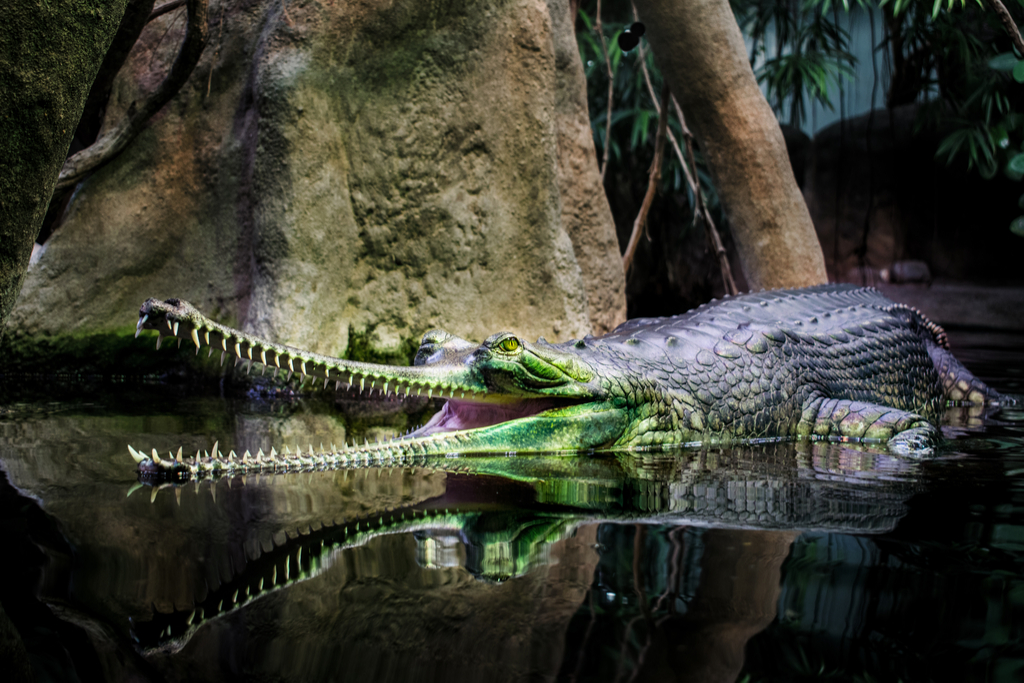
Native to South Asia, the Gharial is a species of critically endangered crocodile, easily identified by its extra-long snout and row of 110 impressive (and incredibly sharp) teeth. These special features allow the Gharial to be an incredibly skilled predator in the water—though the steady decline of fish populations in the area have contributed to their endangered status.
11
Lamprey
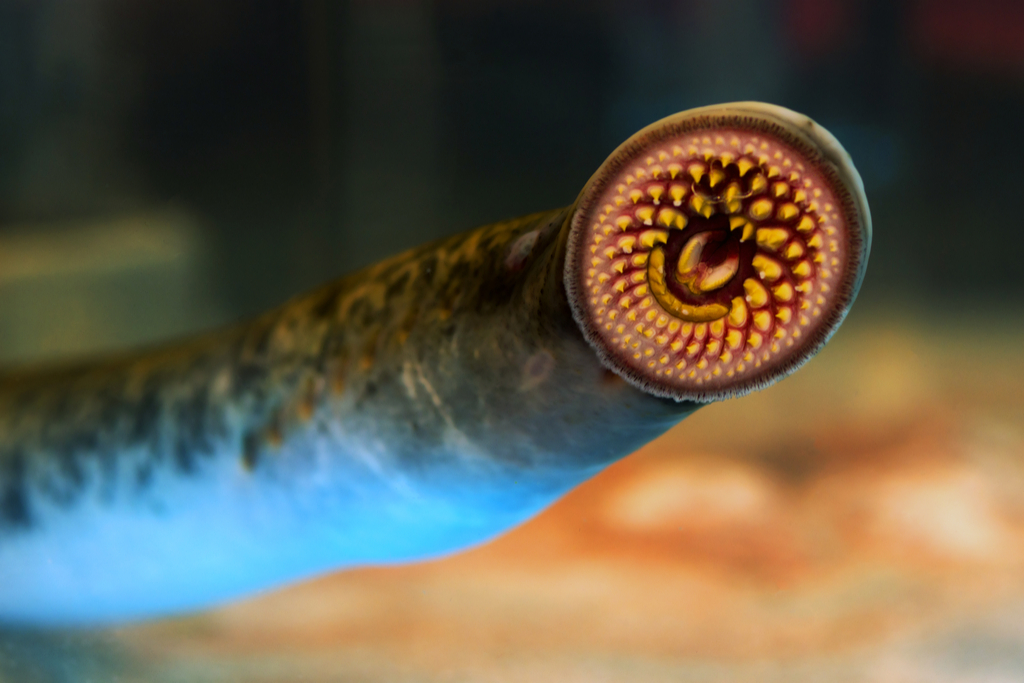
This jawless fish is characterized by its toothed, funnel-like sucking mouth, which looks as if it's culled straight from a bad horror movie. Due to its ability to migrate long distances, certain species have even been found in the Great Lakes. To kill their prey, which mostly includes small fish, they use their teeth to attach themselves to the prey—and suck. And for further impetus to steer clear of the depths, check out the 30 Reasons Why the Ocean Is Scarier Than Space.
12
Hairy Frogfish

Also known as the Striated Frogfish, this marine fish gets its strange appearance from the irregularly-arranged spinules, resembling hair. Depending on their environment, these fish can change colors to better blend into the background. What makes these fish is unique is their ability to consume fish that rival them in size—sometimes in one gulp.
13
Eastern Tube-Nosed Bat
This small fruit bat, endemic to Australia and Japan, is named for its unique nostrils, that resemble tubes. Despite the startling appearance of the animal, many locals value the smart creatures, who have been known to create their own forms of igloos in the winter.
14
Coconut Crab
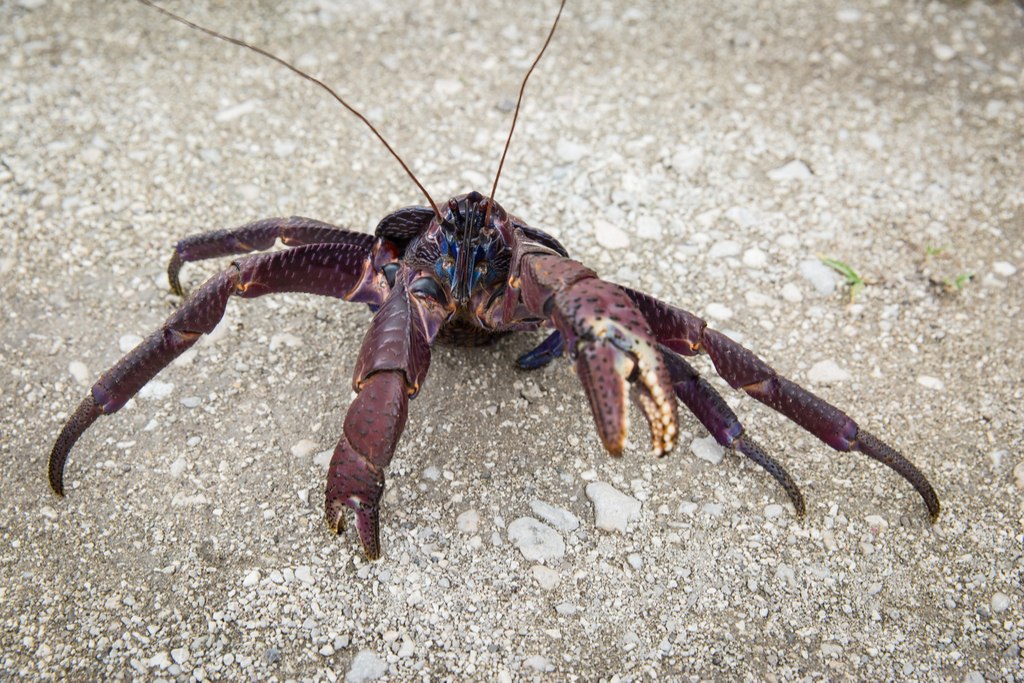
The Coconut Crab is the largest land-living arthropod in the world, can grow to be more than three feet long, typically weighing around 9 pounds. These crabs thrive in tropical areas, namely islands along the Indian Ocean. And, though they are named after the coconut-laden communities they inhabit, they are rarely seen consuming the fruit, and opt instead for any potential source of food on the ground, earning them the nickname, "robber crab." These crabs, when sensing danger, even have the ability to climb trees—and often do so to hide from larger predators, like older, cannibalistic Coconut Crabs.
15
Promachoteuthis sulcus
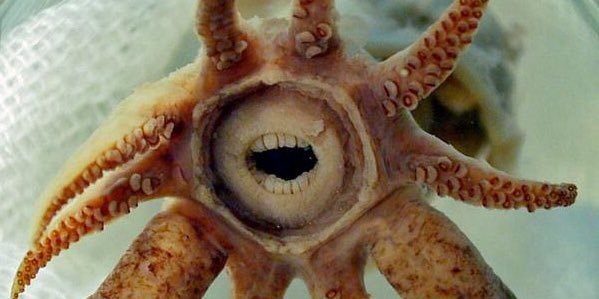
Caught in a German fisherman's net in 2007, this photograph of the newly discovered Promachoteuthis sulcus is the only one that exists of this particular species. It was immediately noted for its pair of exposed lips, which strangely resemble human teeth. While not much is known about the deep-sea squid, it poses no threat against humans, as it only dwells in the deep sea, and measures out to only be around one inch long.
16
Anglerfish
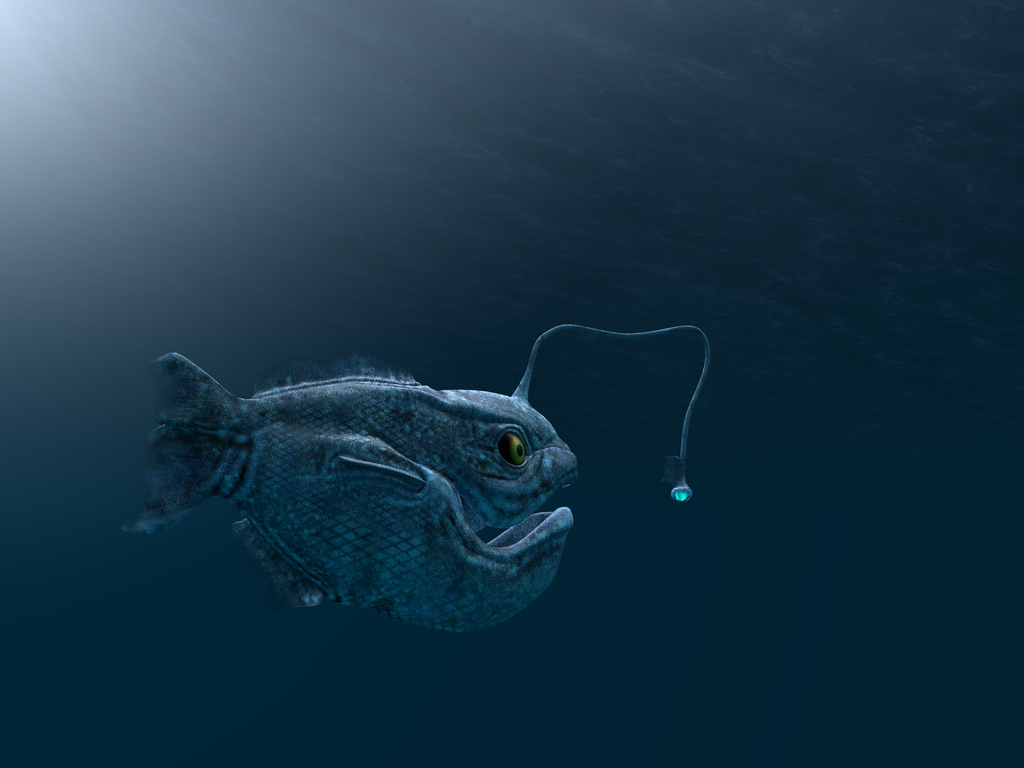
When you imagine the creepiest creatures lurking at the bottom of the sea, you probably envision fish similar to the Anglerfish, made easily identifiable by the luminous piece of dorsal spine that protrudes above their mouth, only present in females to attract male fish and prey. To make them appear even more menacing, the Anglerfish's mouth is filled with translucent teeth—not to mention that their mouth is large enough to enable them to swallow fish more than twice their own size, according to National Geographic. And for more frights from the deep, check out these 20 Bizarre Sea Creatures That Look Like They're Not Real.
17
Giant Huntsman Spider

Meet the world's largest spider—the Giant Huntsman Spider. In fact, these spiders are so large that they grow to be up to one foot long, allowing them to travel up to one yard per second when approaching prey, like cockroaches and other large insects. Distributed in warm climates across the world, these spiders are notorious for entering cars and houses—though are only known to cause minor symptoms in humans, like headaches, when they attack.
18
Kauaʻi Cave Wolf Spider
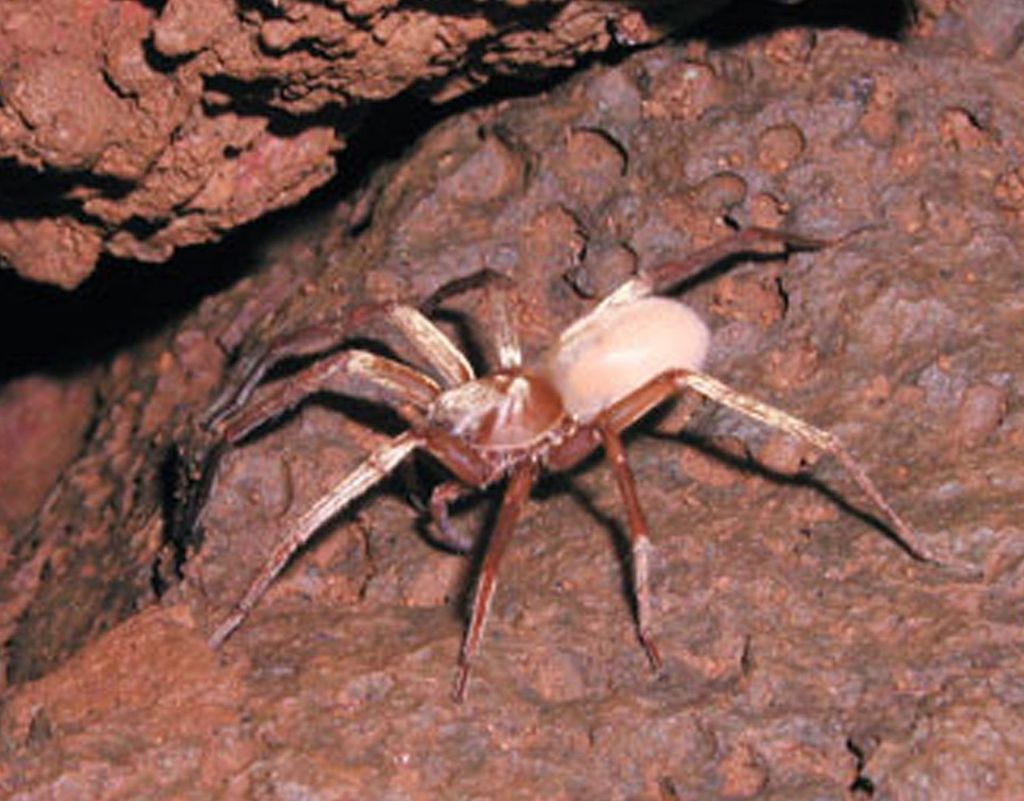
Found deep within caves in Kauaʻi, Hawaii, this species of spider is incredibly unique for its absence of eyes, instead, using its shiny sensory hairs called trichobothria to navigate life in the volcanic caves.
19
Texas Blind Salamander

While this type of salamander is rare, only dwelling in and around the Edwards Aquifer near San Marcos, Texas, its nearly translucent body and lack of eyes make it extremely easy to identify, says Texas Parks & Wildlife. Its blindness is the result of its living environment—underwater, dark caverns. To hunt, the salamander simply uses its other senses to detect the vibrations in the water of their prey that typically includes tiny snails and shrimp.
20
Sinocallipus
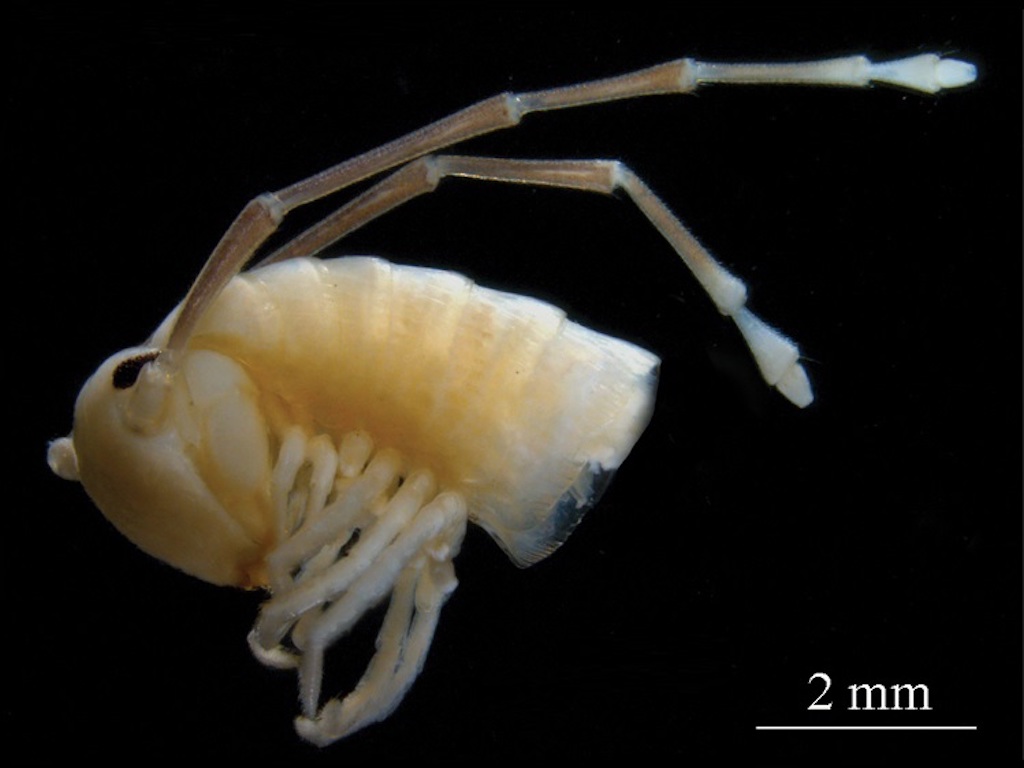
These cave-dwelling millipedes are unique for their antennas and skull shape, which resembles that of an ant. These ant-like millipedes dwell in caves along Vietnam and China, with some only able to survive in tropical climates.
21
Basket star

This extraordinary deep sea creature has an incredibly unique series of twisting and turning arms that can measure out to a meter long. To feed on its main predator, zooplankton, the Basket star uses its arms, attached with tiny sharp hooks, to capture the prey. Even more amazingly, any limb that is damaged or broken off can be regrown.
22
Mantis Shrimp
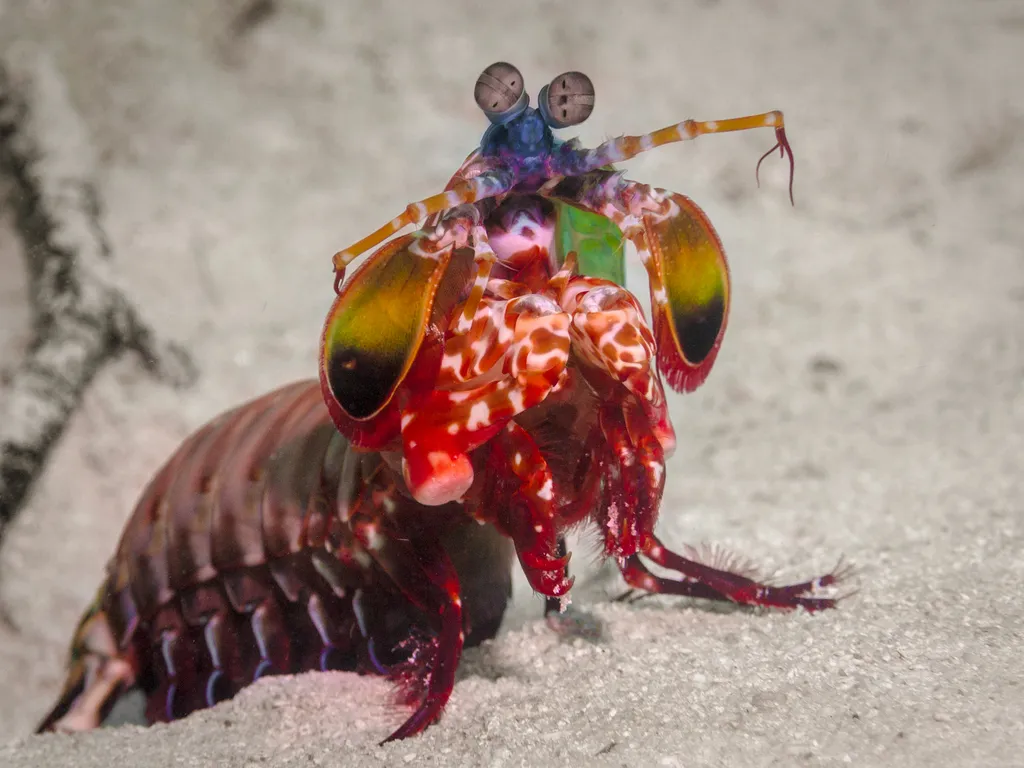
Not only does the Mantis Shrimp, endemic to sub-tropical marine climates, display some of the most beautiful colors in the animal kingdom, as pictured above, its eyes also contain 12 color receptors—9 more than humans and other animals typically possess. Basically, this means that these animals associate different movements and patterns with colors, rather than using all of their senses to determine their surroundings. Further, this small creature can stun any predator with their powerful claws that can stun with 200 pounds of force. In short, the Mantis Shrimp has become one of the brightest anomalies in the human kingdom for scientists to study.
23
Asian Giant Hornet
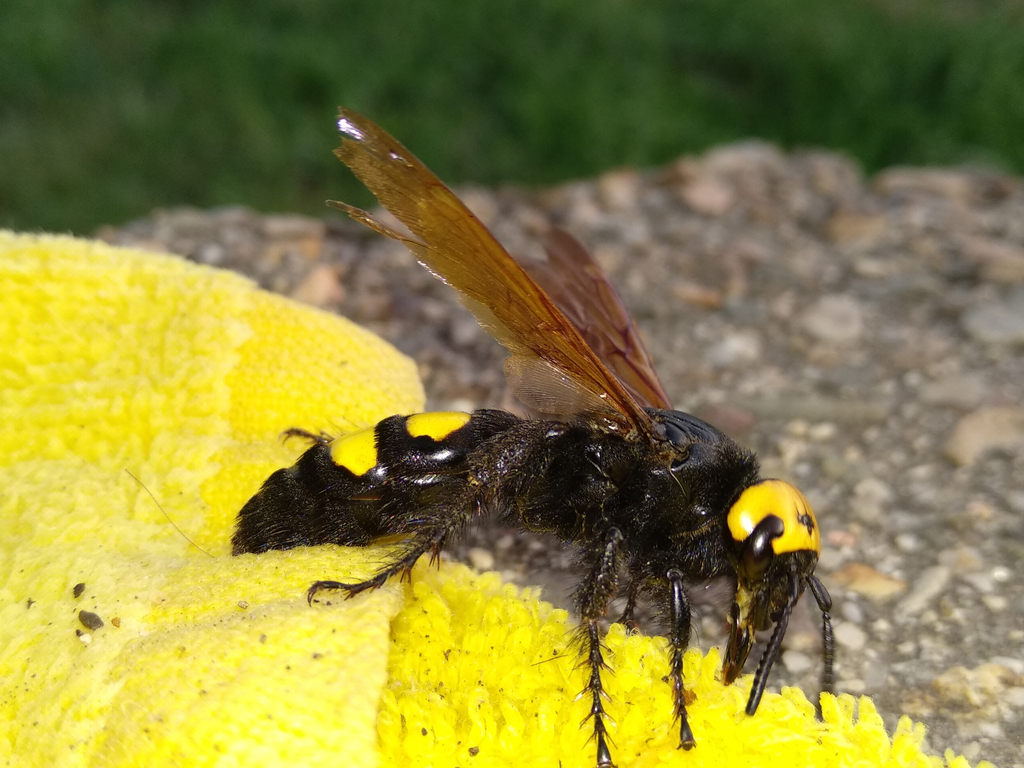
With a wingspan of over 3 inches, The Asian Giant Hornet is the world's largest hornet. Native to the tropical parts of Eastern Asia, this hornet's venom is so potent, that, when stung by several at the same time, humans can actually die. In fact, in 2013, this insect went on a deadly rampage, killing 42 people and injuring 1,675 others in three Chinese cities, according to CNN. In short: avoid this bug at all times.
24
Hagfish
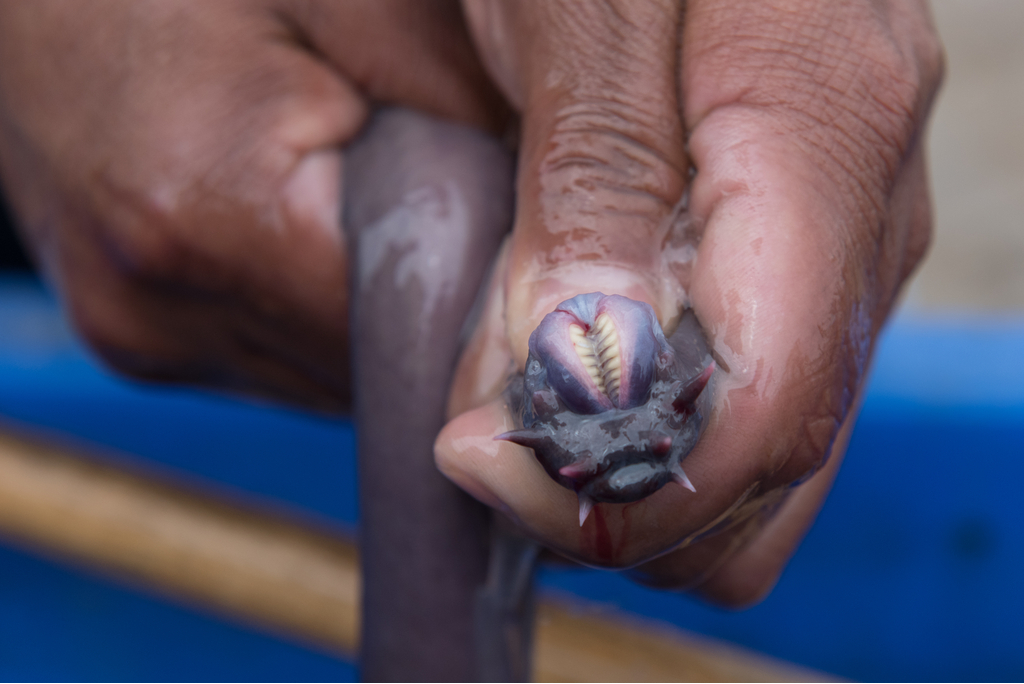
According to Smithsonian, the Hagfish is considered to be the most disgusting animal on the planet, as they actually eat their prey from the inside out—using their sensory tentacles to burrow into its skin and devour it from the inside. If that wasn't repulsive enough, the hagfish repels predator using its slime, which it produces to slither across the bottom of the ocean.
25
Dumbo Octopus

Also known as Grimpoteuthis, the Dumbo Octopus was named after its apparent resemblance to Dumbo, the iconic Disney character. Measuring out to be around 12 inches in length, this deep sea dweller is the only octopus to swim at such depths, and can be found all around the world—even off the coast of Oregon.
26
Kiwa hirsuta
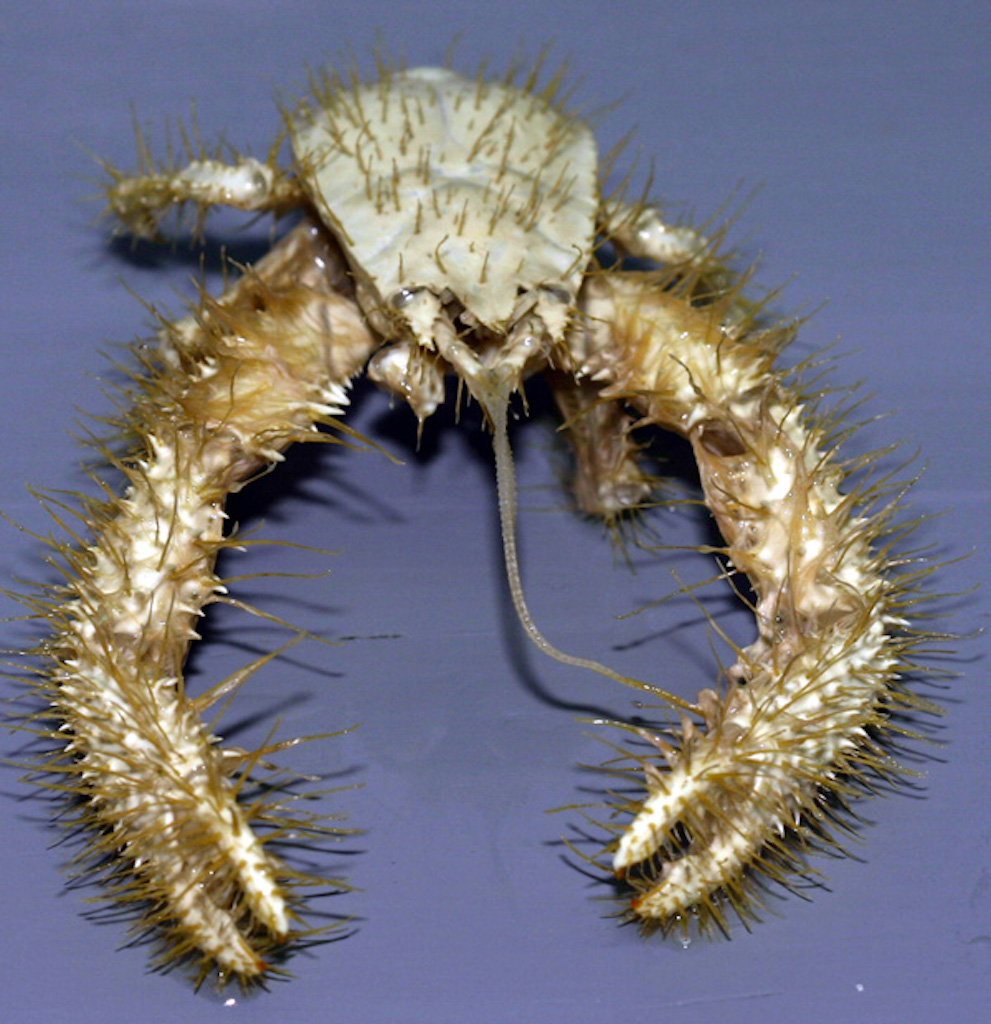
Also dubbed the "yeti crab," the Kiwa hirsuta is a crustacean covered in silky blonde setae, resembling fur or hair. It was discovered in 2005, just off the shore of Easter Island, at a depth of 7,200 feet. The creature had never been discovered prior to this because of its tendency to burrow under hydrothermal vents. To survive living next to these vents, the Kiwa hirsuta uses its "hairy" setae to detoxify poisonous materials emitted from the vents.
27
Leafy Sea Dragon
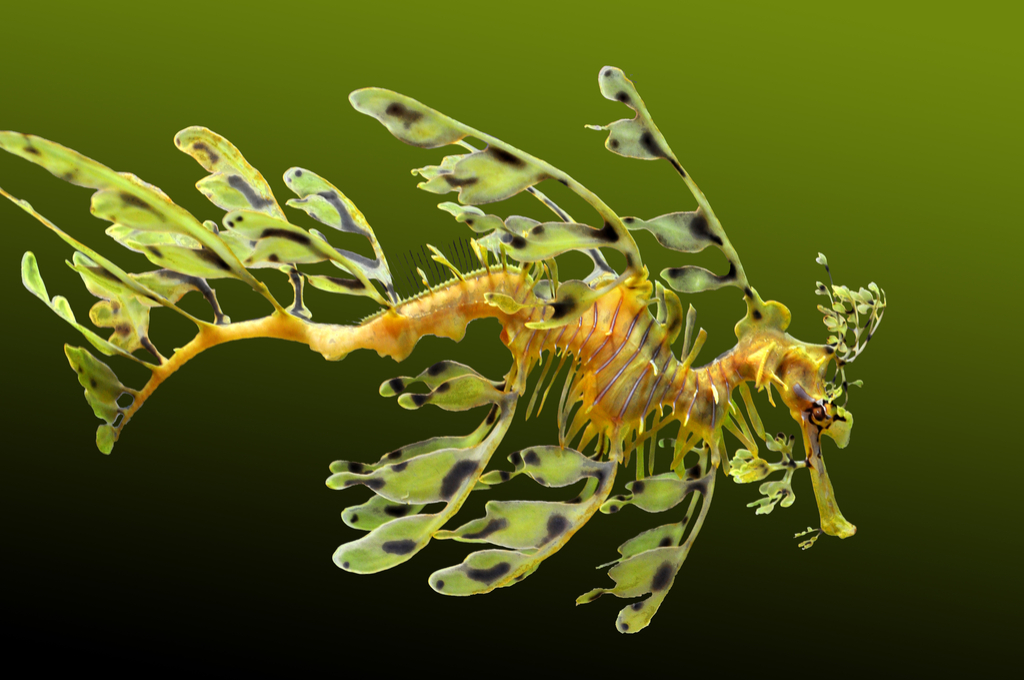
The Leafy Sea Dragon, closely related to the Sea Horse, is an expert at camouflaging themselves, using their leaf-shaped appendages to blend in with the surrounding plant life. To move along the water, these sea dragons actually use two fins—one pectoral and one dorsal—that are so thin they are nearly invisible.
28
Kangaroo rat
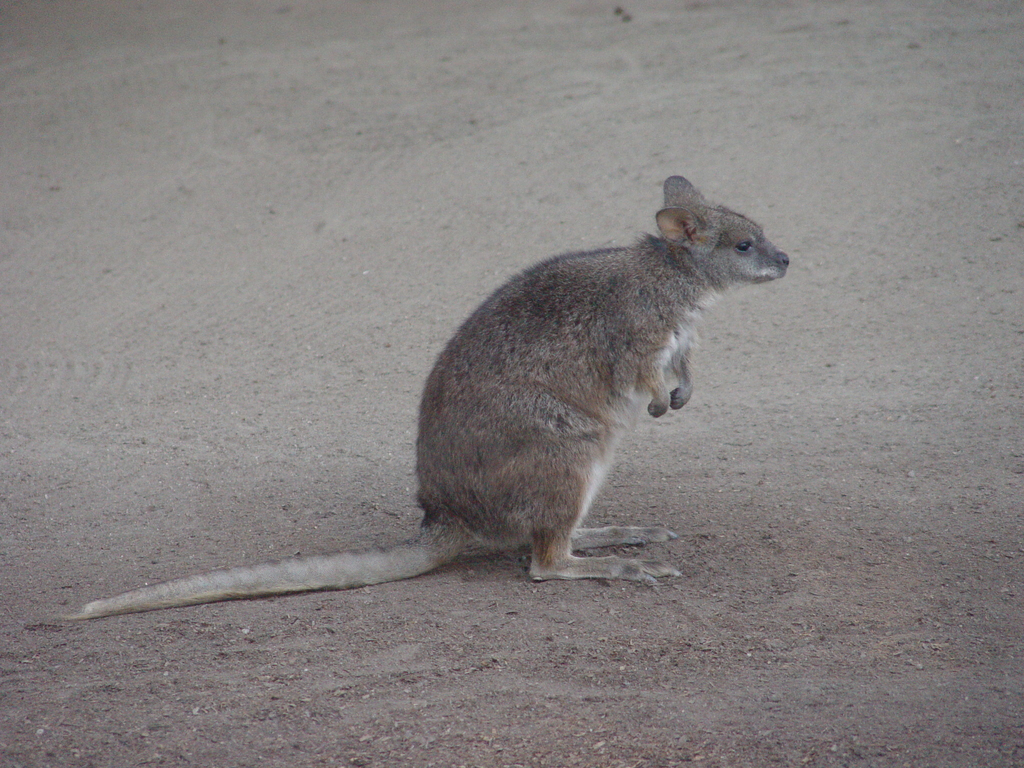
Similar to Kangaroos, these small animals, standing only six inches tall, hop at distances of around 9 feet and bear smaller front legs than hind legs. Not only that, but this North American rat also has fur-lined pouches that they use to store food.
29
Blobfish
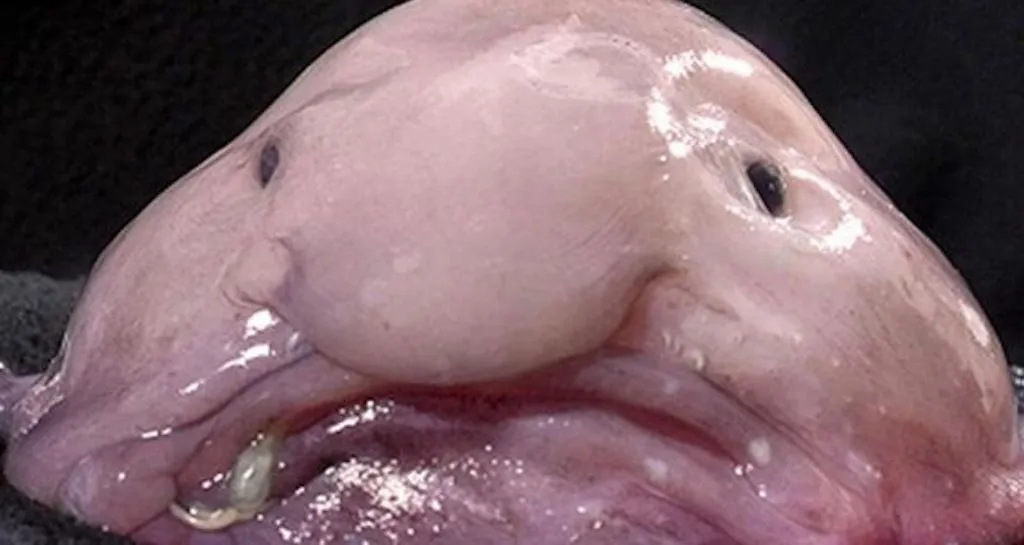
Voted as the "World's Ugliest Creature" by the British Science Festival in 2013, the Blobfish, also considered to be one of the laziest creatures in the sea, rarely moves due to its lack of muscle tone (which also contributes to its ugly appearance). These fish spend most of their lives on the ocean floor outside of Australia, Tasmania, and New Zealand, swallowing any edible matter that floats in front of it.
30
Scotoplanes
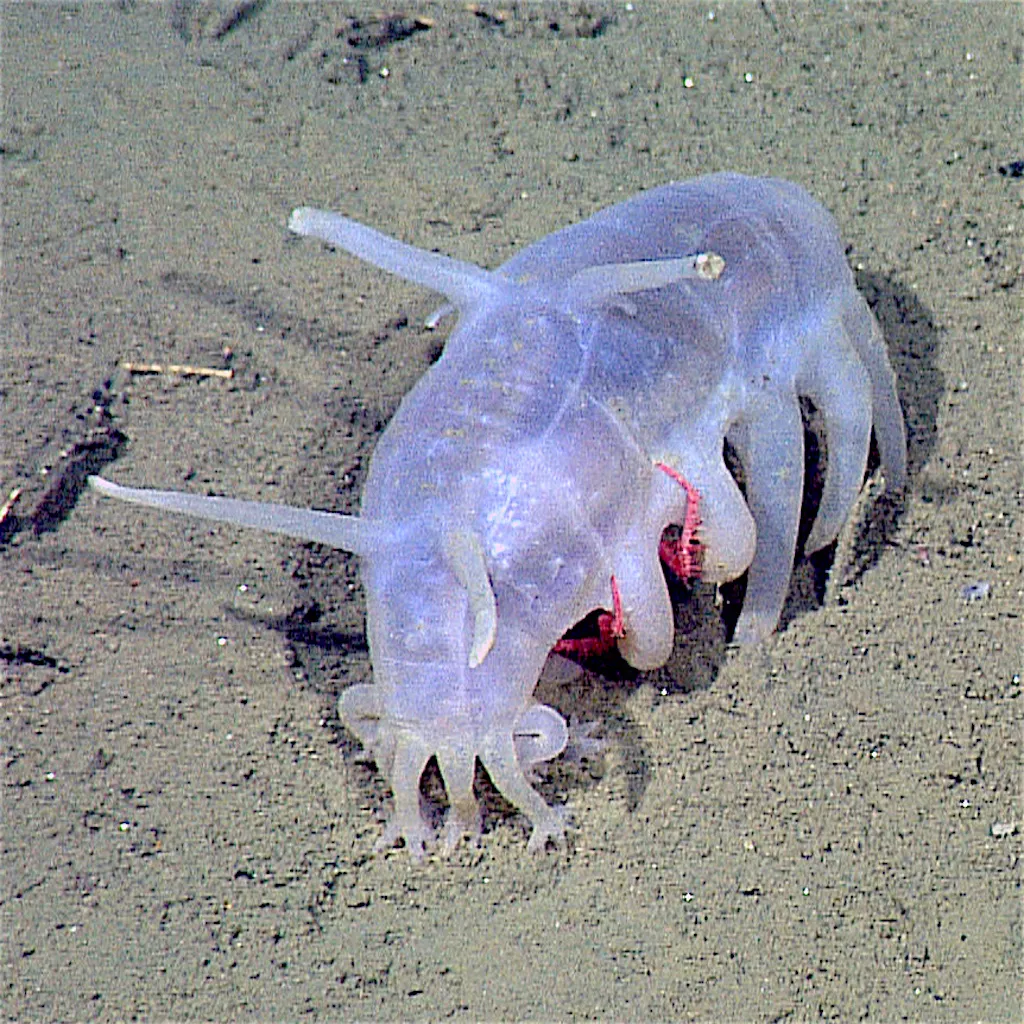
Also known as a Sea Pig, this deep sea dweller lives in the Atlantic, Indian, and Pacific Oceans. using the tentacles on its mouth to consume its favorite meal—decomposing flesh. Though sitings of this sea creature are rare, when it happens, visitors to their habitat are likely to stumble upon groups of up to 600, as they like to travel together in packs. And for more of the ocean's creepiest critters, check out these 20 Sea Creatures More Dangerous Than Sharks.
To discover more amazing secrets about living your best life, click here to sign up for our FREE daily newsletter!




